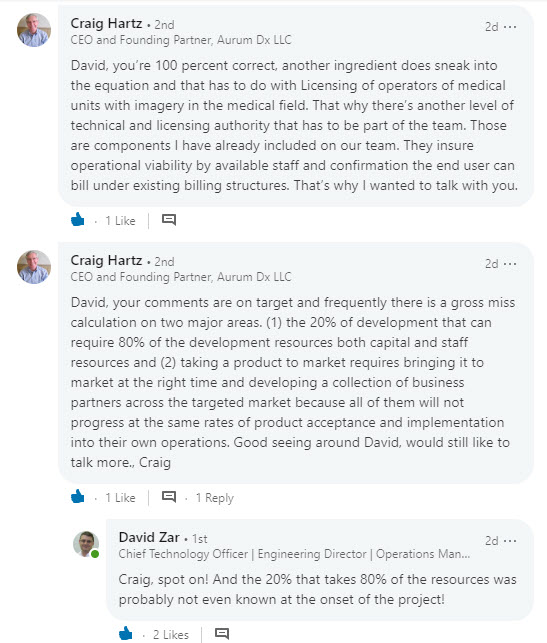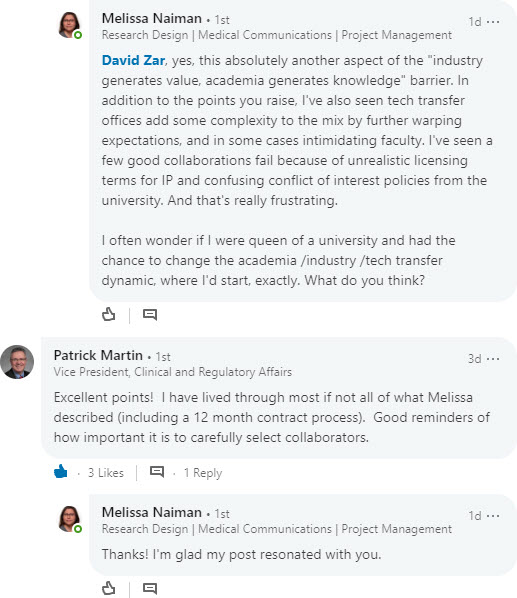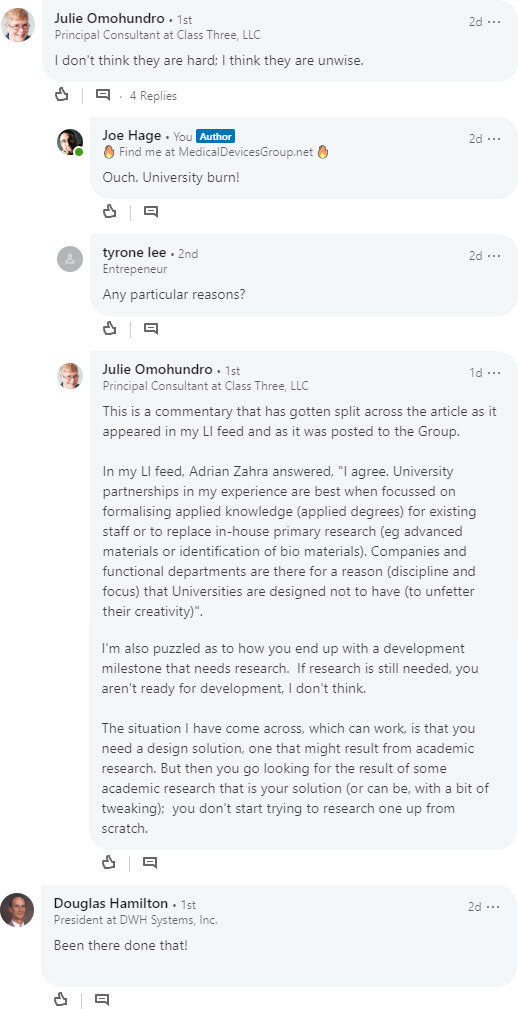|
6 likes
7 comments
share |
5 min reading time
You have a milestone. To achieve it, you need research… so you search. In-house? Crazy talk. Contract Research Organization? Your budget is too small. The University down the road? Now we’re talking, you think. They have smart people, cutting-edge equipment, all the infrastructure you could need. You have funding, they want funding. This will certainly work.
Six months later, you’re not where you thought you’d be. Why is this so hard? Because for the most part, universities are not set up to provide fee-for-service research. In this guest post, Melissa Naiman reflects on 12 years (2007-present) in research administration at the University of Illinois at Chicago’s School of Public Health. Here are 5 reasons why university partnerships are so hard – and how to work around them. 1) The purpose of university research is to generate knowledge, not value.If your “easy” project does not advance a researcher’s larger contributions to science or medicine, it may not be a priority to them, even if they take your money. It’s often the case by the time an objective becomes a commercial milestone, the science behind it has been beat to death in the literature. And the money you offered? A few months’ worth of salary may not be compelling relative to a 15-year research strategy. So, when you approach potential academic partners, understand where your research needs fit within his/her overall body of work. Have they published extensively on similar topics? Do they think they will be able to publish the outcomes from this study without disclosing confidential information? If so, proceed. 2) Tenure is to professors what exits are to start-ups.Faculty members with great scientific contributions seek tenure. Understand where your ideal research partner is in the process; it can enhance your project’s success. Like an acquisition, extensive due diligence is involved. Dossiers are compiled and painstakingly refined over many months and take over a candidate’s life. If tenure is denied, the candidate typically leaves the institution within a year – leaving your project leaderless. So, when you approach a potential academic partner, ask about professional milestones such as tenure reviews. If important deadlines are within a tenure-review year, consider the partnership carefully or have contingency plans ready. 3) Faculty members are not CEOs.There is nothing fast-paced about university collaborations. Individual researchers have very little control or influence over administrators. The simplest industry agreements involve – at a minimum:
If you want to make major changes to a university contract template, expect major delays with legal. Animal or human subjects research? Then additional regulatory reviews are required. Each step typically needs to be done in sequence; each step, three business days to several weeks. So, when you approach a potential academic partner, firmly understand the project approval process for industry-sponsored research. Meet the departmental business manager. Confirm timelines associated with each step. Discover conflicting deadlines. Get a feel if the business manager gets along with the central research administration office: A good relationship is handy when you’re tight on time. 4) Be prepared for sticker shock.University research budgets have a ton of mandatory indirect costs – and researchers screw them up all time. So, when you receive an initial budget estimate (especially it doesn’t have a line-item breakdown), expect a much higher number from the budget office. For example, facilities and administration (F&A, also known as “indirect cost recovery” or “ICR”) can run anywhere from 35-90% of direct costs and graduate tuition remission can add 25-40% to graduate student salary. Before you approach a potential academic partner, find their standard F&A rates, found on the research office website. While you’re at it, find out the F&A negotiation or waiver process (F&A rates are usually negotiated for Federal agreements, industry is not always obliged to honor them). 5) “Lost time is never found again” – Benjamin Franklin.University researchers often struggle with efficiency and time management, a huge problem for small companies who watch progress with one eye, and burn rate with the other. Revisiting point 3, faculty members aren’t CEOs. They have limited control over lab members, who, in some cases, will perform the actual work. Since incentives or disincentives are both limited, progress ebbs and flows with the academic calendar. If graduate students are heavily involved, consider winter breaks (including university-wide shutdowns between Christmas and New Year’s), spring break, summer break, and finals. So, When approaching a potential academic partner, ask exactly who will perform key tasks. Will he or she be dedicated to research or also have other responsibilities? Will they have summer support? Also, meet the research team. Get a feel for the overall dynamics of the lab. If lab members can’t articulate what they’re currently working on, that’s a red flag. Is it worth it?Given the hardships, is a university partnership worth it? Yes, if you have the time to engage in collaboration, the relationship is valuable. Academic partners are better positioned to provide insights and approaches you may not have otherwise considered. Researchers, not beholden to the paycheck, are more likely question your assumptions, which is healthy at the right stage of development. If your academic partner is also a good mentor, you’ll have access to a talent pool that might otherwise be hard to penetrate. Unless time is most important consideration!If that’s the case, look elsewhere. +++ You May Have Missed…
+++ Thank you for being part of our Medical Devices Group community!Please
Joe Hage P.S. The 10x Medical Device Conference is eight weeks from today. You’ll want to start getting your flights aligned if you’re flying in. Marked as spam
|
Meet your next client here. Join our medical devices group community.

Private answer
James Lilja
This subject is important to me as an industry consultant and owner of a SMO. University research in the industrial space simply does not work unless it’s a fundamentally new field that their professors are already trying to discover. Even then professors think along lines of space, grants and original publications— If they are flush with space and grant money they don’t want your capitalistic presence and the hassle of dealing with other priorities. This is why I’ve tried for several years to set up a biotech hospital free of the university presence. Have all the real trials work done there and then find a professor offsite who can be approached to collaborate at his/her convenience as and offer them authorship. The MDs doing the trial don’t care about that so it could work well. Marked as spam
|
We still use LinkedIn to access our site because it’s the only way to “pull in” your LinkedIn photo, name, and hyperlink to your profile page, all vital in building your professional network. When you log in using LinkedIn, you are giving LinkedIn your password, not me. I never see nor store your LinkedIn credentials.











